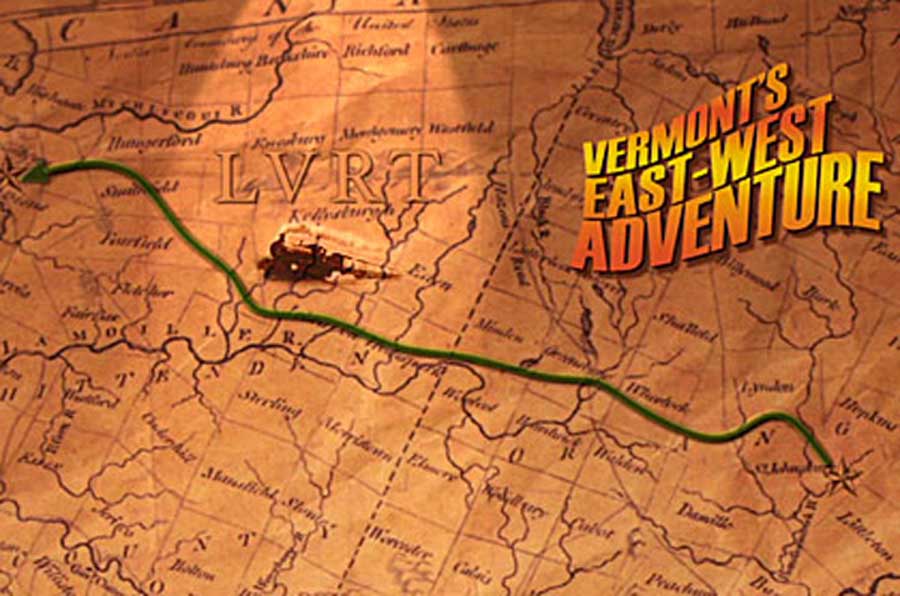Lamoille Valley Rail Trail hopes for 2015
Many of the Vermont snowmobile trails scattered across the state can go unnoticed, yet amongst Vermonters, snowmobiling is a part of North Country tradition. With heavy snowfall, Vermont has offered close to ideal snowmobiling conditions this season, and the state’s snowmobile clubs and various associations have been taking full advantage of this weather.
While Vermont does have many farm fields that are good for snowmobile riding, a crucial part of its snowmobile culture in the area is the trail system that has connected the state since 1967. The Vermont Association of Snow Travelers trail system is a 5,000-mile long snowmobile highway that interconnects across the state. Equipped with everything from ideally located gas stops, to “stop” and “bridge crossing” signs, the VAST trail system takes thousands of snowmobiles to many of Vermont’s most beautiful sight seeing locations every year. With 120 trail groomers and more than 130 clubs located in conveniently placed locations along the trail, the VAST non-profit snowmobile club has over 30,000 members.
A snowmobile may seem a little out of the price range for the average college student; however, sections of the VAST trail system are groomed, maintained, and kept open throughout the warmer seasons. A new addition to the VAST trail system is known as the Lamoille Valley Rail Trail. This trail runs directly through Jeffersonville and continues through Johnson along route 15.
In fact, the Lamoille Valley Rail Trail passes through 100 miles of Vermont countryside and towns to complete the longest railroad in New England. This old stretch of railroad track was created in 1877, taken out of commission in 1994, and is now under reconstruction to be transformed into a multi-seasonal recreational trail.
LVRT Technical Assistant Jessi Hudson explains, “Johnson will begin early construction this spring and should be completed fall 2015. It will be a cleared and resurfaced recreational path with a hard packed granule surface with shoulders. The Johnson phase of building is called phase 1B and this construction section will span 17.42 miles from Morrisville to Poland Bridge, Cambridge Junction.”
Sections of the trail running through Jeffersonville have already been finished in order to give people an idea of what the trail will eventually be like. LVRT administration expects the trail to be economically beneficial for the Vermont communities that it runs through because of its tourism draw and year-round use.
In order to snowmobile on the trails you must first register a snowmobile for trail use. There is a $25 fee, but there is no fee to register a bicycle in the summer, as the trail is open to everyone for free.
Johnson State College student and president of the Johnson College Bike Club Luke Peduzzi says he uses the trail system regularly.
“There are some real good sections right here in Johnson but it sucks that the whole trail is covered in gravel,” he says. “There are parts where it isn’t but most of it around Johnson is. It’s better for running I guess.”
Many parts of the trail are covered in white gravel as a means of preserving the snow at the end of the season and this does make for strange surface to bike any distance on. The trails in Jeffersonville and other areas that maintain summer sections have seemed to realize this problem and have placed smooth topsoil on the paths instead.
Shelby Davis, JSC student government senator, uses the trail system frequently for walks with her boyfriend. Davis explains, “We go for a walk on it [VAST trail] almost every week, more in the summer time. It’s nice and flat, and like, it just goes on for as long as you would want to walk. The best part is that I can almost see it from my apartment.”
Davis lives in the middle of Johnson on Railroad Street, about one hundred yards form the Johnson Lumber Company. The VAST trail system runs practically through the lumber mill and continues to run south east following River Road continuing through a farm at the end of the road.
VAST is open to foot traffic through out the year but make sure to watch for the carefully labeled crossing. The trail was created for the enjoyment of Vermont’s citizens and that includes its students.
Max Van Wie joined the Basement Medicine staff in Spring 2014, assuming the position of staff reporter.




